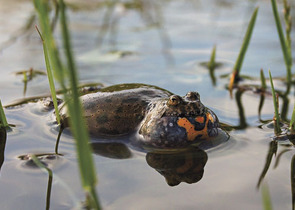The Journal is published by the Nature Conservation Agency of the Czech Republic in cooperation with the Cave Administration of the Czech Republic, the Krkonoše Mts. National Park Administration, the Bohemian Forest Mts. National Park Administration, the Podyjí National Park Administration and the The Bohemian Switzerland National Park Administration. It has been published since 1946.
cs / en
Nature Conservation 4/2013 — 24. 10. 2013 — On Nature in the Czech Republic — Print article in pdf
Jeřábková L., Krása A. & Svoboda A.: Amphibians in Danger

In the Czech Republic, the occurrence of 21 amphibian species, in various extents threatened by extinction, is confirmed at present. The fact has resulted, inter alia, from their amphibious way of life.
Any affect in terrestrial or freshwater habitats immediately shows up in amphibian populations. Therefore, the broad knowledge of their distribution, population status and drivers threatening these vertebrates, gathered by monitoring, inventories and mapping, is necessary for the effective amphibian conservation and management. The gathered data have been used for developing an amphibian conservation strategy in the Czech Republic. The policy document is based on assessment of up-to-date population status of the amphibian species inhabiting the country. At the same time, the species which special attention should be paid to had also been selected. The next step included an analysis of drivers generally influencing amphibian populations in the Czech Republic. Consequently, specific measures to maintain or improve amphibian conservation status were proposed. The measures to be implemented in the field always include both terrestrial and freshwater habitat management. Direct support (e.g., conservation transfers) saves the individuals, while indirect one aims at appropriate management at sites harbouring amphibians or in the vicinity of such sites (mowing, grazing, bush thinning, tree felling, building small water reservoirs, measures blocking overgrowing the site by vegetation or building over-wintering shelters or hibernacula).

